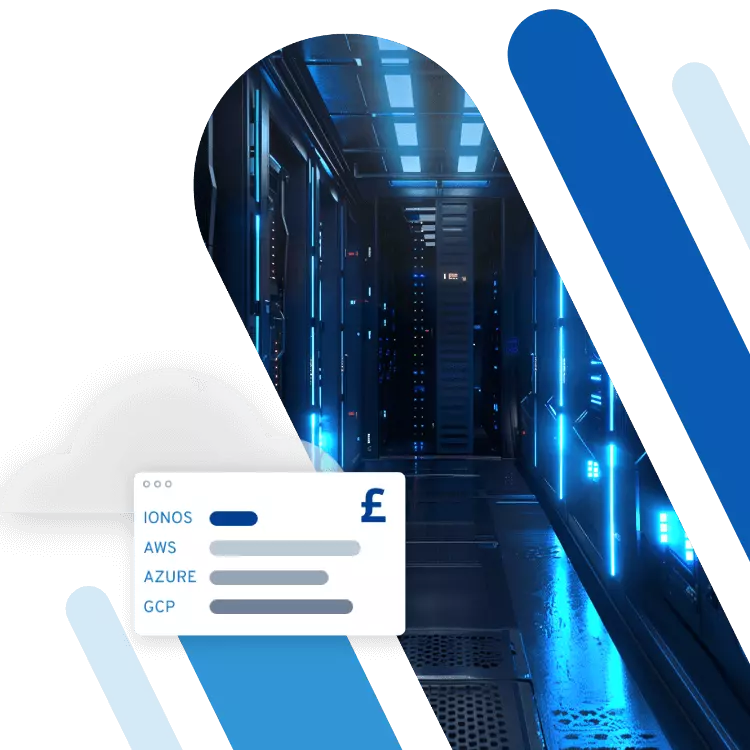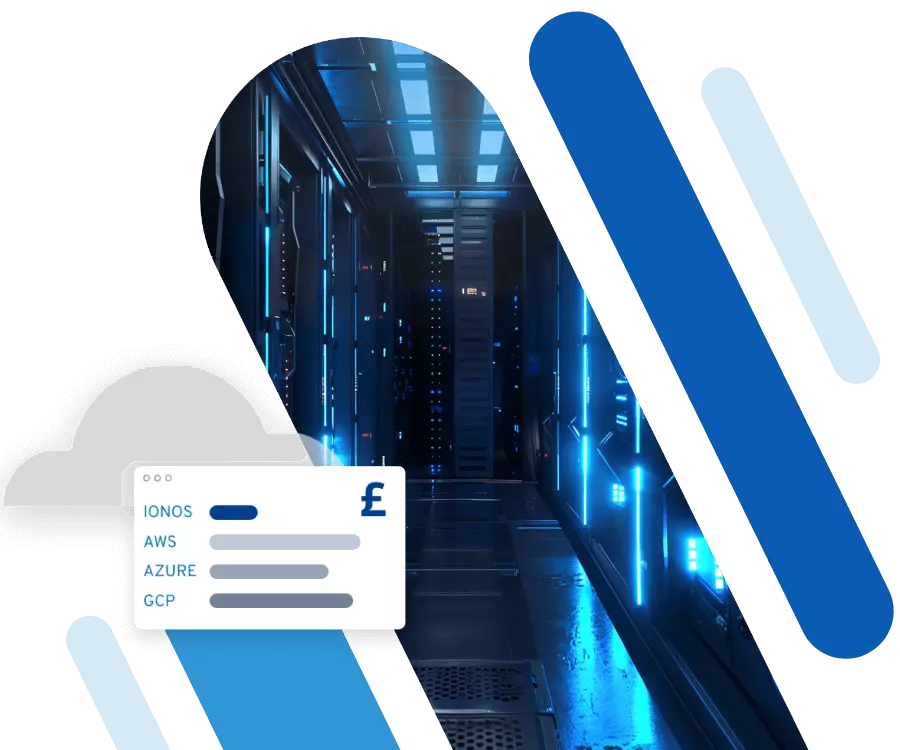6 best alternatives to Apache Cassandra
Apache Cassandra is popular all over the world. The database management system is used by lots of large companies and is designed for dealing with big data. But if you’re thinking about switching or want to try a different approach, these six alternatives to Cassandra are worth considering.
- Enterprise-grade architecture managed by experts
- Flexible solutions tailored to your requirements
- Hosted in the UK under strict data protection legislation
What is Cassandra and what alternatives are there?
Apache Cassandra is one of the most successful column-oriented NoSQL databases in the world. Released in 2008, the open-source solution is used by major companies such as Apple, Netflix, Spotify and X (formerly Twitter) and it has its own query language CQL (Cassandra Query Language). The primary purpose of the database management system is the storage and management of large volumes of data. Apache Cassandra scores particularly well with its horizontal scalability, which can expand to accommodate increasing volumes of data. The system is extremely reliable, thanks to the use of multiple nodes, which lend themselves to the overall flexibility of the database. While the speed of the solution makes it superior to many other databases, the database does have some disadvantages.
Cassandra is a highly flexible tool, but unlocking its full potential comes with a significant learning curve. This challenge extends beyond its custom query language, which—while inspired by SQL—is not particularly intuitive. Designing, implementing, and managing complex databases can be especially daunting for beginners. Additionally, the possibility of storing data redundantly can make it harder to maintain a clear overview. Depending on your specific needs, it may be worth exploring alternatives to Cassandra. Below, we introduce some of the best options.
MongoDB—The best option for large amounts of data
One of the best alternatives to Cassandra is undoubtedly MongoDB. The approach of this document-oriented NoSQL database is already reflected in its name: derived from ‘huMONGOus’, meaning ‘gigantic’ or ‘enormous’. MongoDB is proprietary and has been available since 2009. It stores data in the binary JSON format BSON and stands out particularly for its scalability, availability, and flexibility. Even complex and heterogeneous datasets can be stored and retrieved in MongoDB easily and clearly. Data is stored in the form of documents, which are grouped into collections. You can modify these documents simply by adding or removing individual fields.
The advantages of MongoDB at a glance
- Horizontally scalable on a large scale
- High availability thanks to numerous nodes
- Flexible thanks to sophisticated architecture
- Data replication possible
- Easy to use
- Very secure thanks to sharding (the partitioning of the database)
- Ad-hoc queries possible
Managed MongoDB from IONOS enables you to concentrate on the essentials. From installation to operation and maintenance work, IONOS makes sure you always get the best performance from your data banks.
MySQL—The relational solution with strong performance
MySQL takes a completely different approach. The open-source system uses a relational model and stores datasets in tables, unlike Cassandra and other alternatives. Data is queried using the well-known and widely used SQL query language. Compared to many other database management systems, MySQL could almost be called a ‘classic’. First released in 1995, it has been continuously developed ever since. Numerous web services and content management systems rely wholly or partly on this solution—examples include Google, YouTube, and WordPress. Today, proprietary versions of MySQL are also available, distributed by software and hardware provider Oracle.
The advantages of MySQL at a glance
- Open source
- Stable and reliable
- High compatibility with many systems, platforms and programming languages
- SQL query language is simple, logical and widely used
- Strong performance
- High availability
- Easy to learn
- Large community and long development history
Firebase—A smart choice for mobile applications
While Cassandra and other alternatives take a broad approach and are ideally suited to handling big data, Firebase is a more specialised solution. Although the development platform is also able to process large amounts of data, it is primarily designed for use with mobile web applications like gaming apps, chat programs and social networks. Mobile web applications like these benefit from Firebase’s real-time synchronisation. Firebase, first released in 2011 and now part of Google, is used by Duolingo, the New York Times, Twitch and Venmo, among others. Today the solution is more than just a database. Firebase is a complete ecosystem with a total of 18 free and paid services.
The advantages of Firebase at a glance
- Real-time processing
- Strong performance
- Ideal solution for mobile applications
- Extensive ecosystem and good integration of various services such as Google Analytics
- Sophisticated cloud solutions
- Several test services
- Machine Learning Kit
- Cross-platform
PostgreSQL—A flexible SQL solution
The foundation for PostgreSQL was already laid in the 1980s. However, the current object-relational database management system was first released in 1996. PostgreSQL, or simply ‘Postgre’, is cross-platform and integrates well with other databases. Although it is an open-source relational system, it also allows columns with nested values, making it significantly more flexible than many other SQL options. Scaling is vertical only, but the database is well-suited for large volumes of data. PostgreSQL is known for its robust security architecture, which is one reason major companies like Apple, Spotify, and Twitch rely on it. A dedicated community also helps ensure its ongoing development.
The advantages of PostgreSQL at a glance
- Open source
- Large community
- Strong security architecture
- Flexible and scalable despite SQL approach
- Numerous interfaces
- High data integrity
- Good query processing and indexing
- Wide range of applications
Redis—The NoSQL database for particularly low latencies
Redis, short for REmote DIctionary Server, is also one of the NoSQL databases. This open-source solution has been available since 2009 and was written in ANSI C. The system’s main focus is speed, offering response times of under one millisecond. This is achieved by storing data directly in RAM, which reduces latency but increases memory usage. Redis supports both horizontal and vertical scaling. While it doesn’t have its own query language, it is relatively easy to use, as demonstrated in our Redis tutorial. Companies such as Airbnb, Slack, and Uber rely on this database.
The advantages of Redis at a glance
- Open source
- Very high speeds
- Horizontally and vertically scalable
- High availability
- Virtual memory management
- Compatible with numerous languages, platforms and systems
- Very user-friendly
- Flexible data structures
- Large and active community
MariaDB—The open-source MySQL fork
MariaDB is a powerful relational database that originated as a fork of MySQL. After Oracle acquired the rights to MySQL, the original developer community—led by Michael ‘Monty’ Widenius—created an independent, open-source alternative. Since its release in 2009, MariaDB has steadily evolved and today impresses not only with full compatibility with MySQL, but also with additional features and high performance in the direct ‘MariaDB vs MySQL’ comparison. It is especially popular with companies that value long-term independence and transparency. The relational structure allows for structured data management in traditional tables, while modern extensions like ColumnStore also support analytical workloads.
The advantages of MariaDB at a glance
- Open source with an active community
- Compatible with MySQL (incl. SQL syntax)
- High performance and stability
- Extensive security features
- Scalable and suitable for large data volumes
- Broad support for platforms and programming languages

